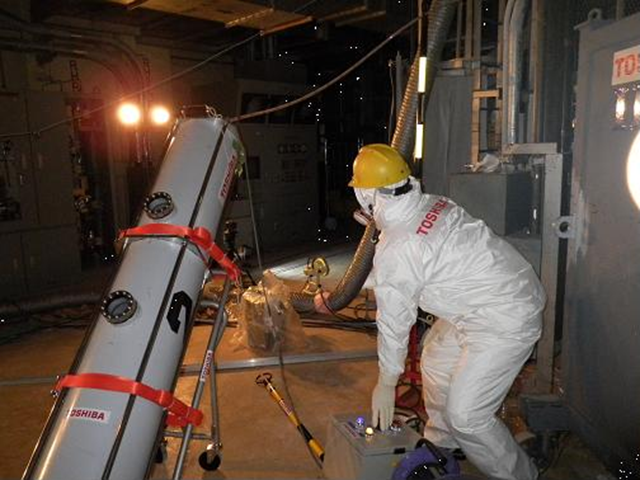Very high radiation, little cooling water in Japan reactor
By MARI YAMAGUCHI, Associated Press
28 March 2012 TOKYO (AP) – One of Japan’s crippled nuclear reactors still has fatally high radiation levels and much less water to cool it than officials had estimated, according to an internal examination that renews doubts about the plant’s stability. A tool equipped with a tiny video camera, a thermometer, a dosimeter, and a water gauge was used to assess damage inside the No. 2 reactor’s containment chamber for the second time since the tsunami swept into the Fukushima Dai-ichi plant a year ago. The data collected Tuesday showed the damage from the disaster is so severe, the plant operator will have to develop special equipment and technology to tolerate the harsh environment and decommission the plant, a process expected to last decades. The other two reactors that had meltdowns could be in even worse shape. The No. 2 reactor is the only one officials have been able to closely examine so far. Tuesday’s examination with an industrial endoscope detected radiation levels up to 10 times the fatal dose inside the chamber. Plant officials previously said more than half of the melted fuel has breached the core and dropped to the floor of the primary containment vessel, some of it splashing against the wall or the floor. Particles from melted fuel have probably sent radiation levels up to a dangerously high 70 sieverts per hour inside the container, said Junichi Matsumoto, spokesman for Tokyo Electric Power Co. The figure far exceeds the highest level previously detected, 10 sieverts per hour, which was detected around an exhaust duct shared by No. 1 and 2 units last year. “It’s extremely high,” he said, adding that an endoscope would last only 14 hours in those conditions. “We have to develop equipment that can tolerate high radiation” when locating and removing melted fuel during the decommissioning. The probe also found that the containment vessel – a beaker-shaped container enclosing the core – had cooling water up to only 60 centimeters (2 feet) from the bottom, far below the 10 meters (yards) estimated when the government declared the plant stable in December. The plant is continuing to pump water into the reactor. […] Matsumoto said that the actual water level inside the chamber was way off the estimate, which had used data that turned out to be unreliable. But the results don’t affect the plant’s “cold shutdown status” because the water temperature was about 50 degrees Celsius (122 Fahrenheit), indicating the melted fuel is cooled. Three Dai-ichi reactors had meltdowns, but the No. 2 reactor is the only one that has been examined because radiation levels inside the reactor building are relatively low and its container is designed with a convenient slot to send in the endoscope. The exact conditions of the other two reactors, where hydrogen explosions damaged their buildings, are still unknown. Simulations have indicated that more fuel inside No. 1 has breached the core than the other two, but radiation at No. 3 remains the highest. […]

